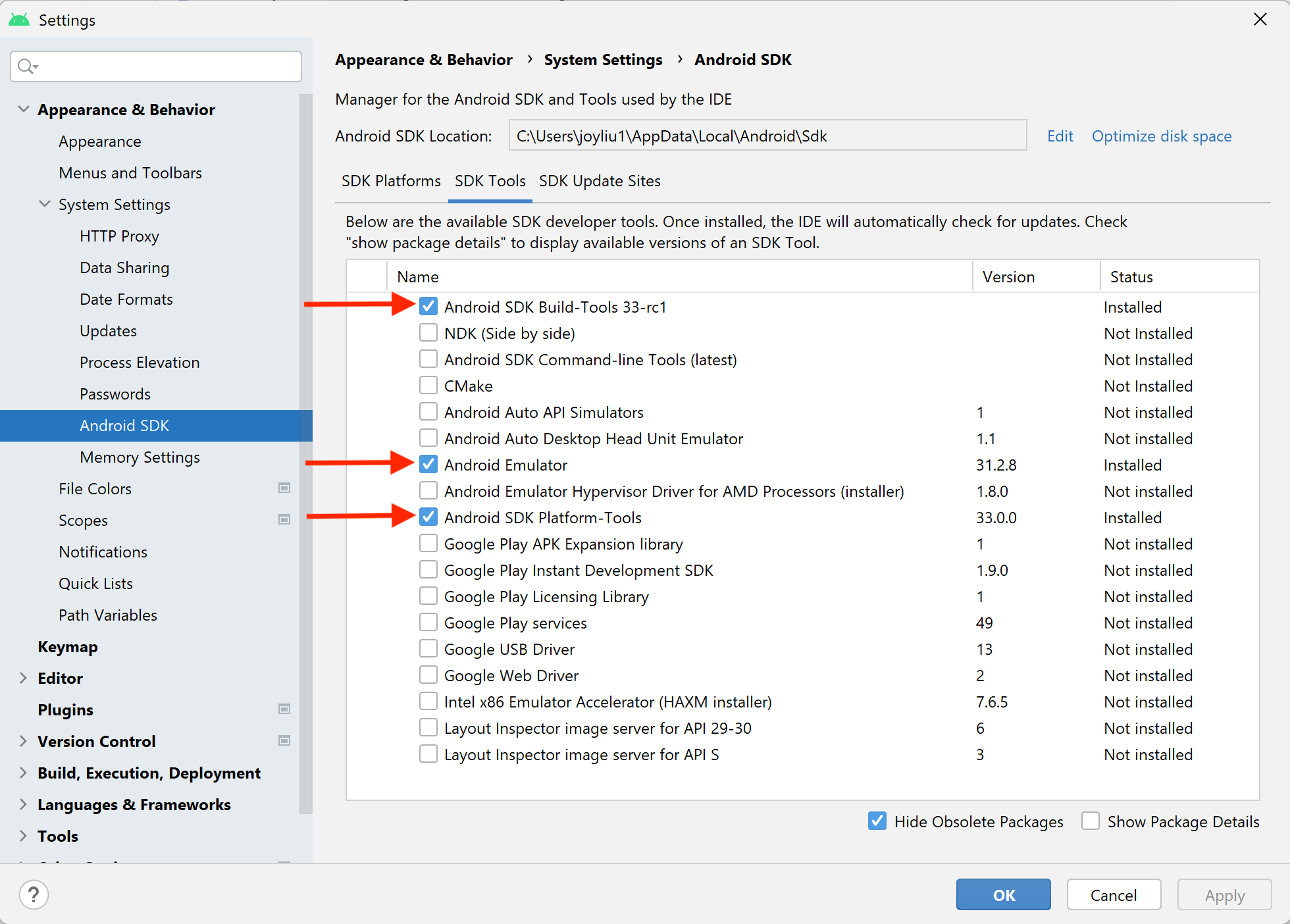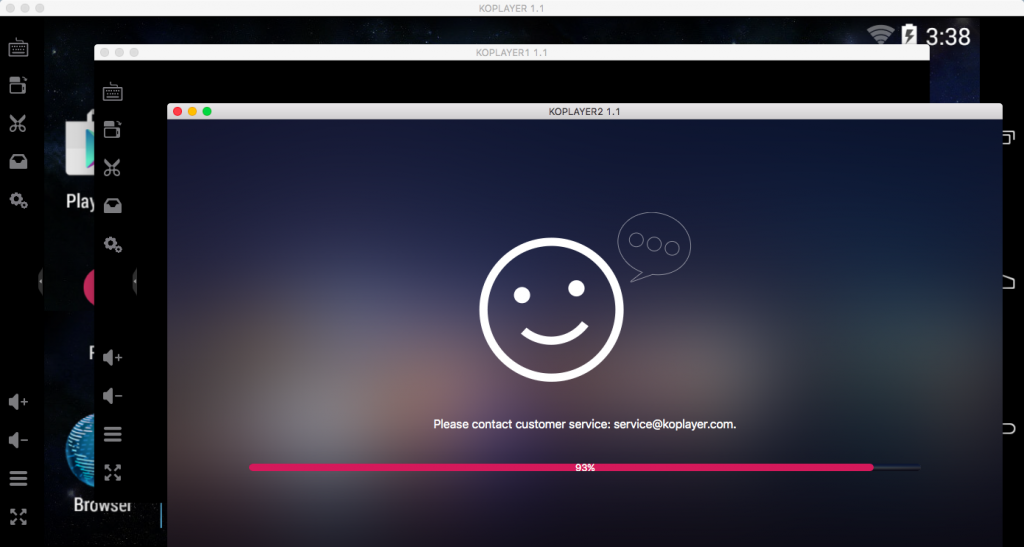The purpose of this section is to guide you to create in your development environment an Android emulator.
Android emulators are managed through a UI called AVD Manager
- Aug 27, 2021 Top 5 Best Android Emulator for Mac 1# Bluestacks Android Emulator for macOS. Certain emulators are easy to install and run. Bluestacks Android Emulator for macOS is a cross-platform App that supports games that allow you to enjoy lossless quality. And its current number of users of the program exceeds 130 million.
- What is an Android emulator? An Android emulator is a software that simulates the Android platform on another platform, such as macOS or Windows. In a nutshell, the emulator brings almost all the functionality of the Android operating system onto another platform. Hence, it gives you the ability to install and run Android apps on the intended.
AVD Manager has a nice interface when started from Android Studio.
Start Android Studio app, then create a blank project.
Go to the Tools menu -> :Android -> AVD Manager:
If no emulator has been created you should start with this screen:
Download BlueStacks for Mac OS X from the official website of BlueStacks and install it like any other software on your PC. Once installed, it will boot up to its Home Screen. From there you can find the installed apps, find new apps in the 'Top Charts', search apps, play games and change settings. $ xcrun simctl install $ xcrun simctl launch or Just type this command in Terminal: open -a Simulator.app.

Click the Create Virtual Device button.
In the Select Hardware window , select Nexus 5 as shown in the following snapshot:
Click the Next button.
In the System Image, select the system image Nougat, API Level 25 , ABI x86 :
Click on the download link to download the selected System Image. This download process is done through SDK Manager.
Once the download is complete, click on the Next button.
In the Verify Configuration window, check any parameter :
Then click on the Finish button.
AVD Manager shows you the newly created device:

Click on the launch button to launch the newly created AVD in the emulator.
Notice in the Run Window of Android Studio the command line used to start the device:
which can be shortened to :
How to start Android Emulator from Terminal?
Bluestacks
Stop the emulator started by Android Studio. Open the Terminal app and type the following command:
This should start the emulator with the selected AVD.
References
Setting up Android Studio takes just a few clicks.
First, be sure you download the latest version of Android Studio.
Windows
To install Android Studio on Windows, proceed as follows:
- If you downloaded an
.exefile (recommended), double-click to launch it.If you downloaded a
.zipfile, unpack the ZIP, copy the android-studio folder into your Program Files folder, and then open the android-studio > bin folder and launchstudio64.exe(for 64-bit machines) orstudio.exe(for 32-bit machines). - Follow the setup wizard in Android Studio and install any SDK packages that it recommends.
That's it.The following video shows each step of the setup procedure when using the recommended.exe download.
As new tools and other APIs become available, Android Studio tells youwith a pop-up, or you can check for updates by clicking Help >Check for Update.
Mac
To install Android Studio on your Mac, proceed as follows:

- Launch the Android Studio DMG file.
- Drag and drop Android Studio into the Applications folder, then launch Android Studio.
- Select whether you want to import previous Android Studio settings, then click OK.
- The Android Studio Setup Wizard guides you through the rest of the setup, which includes downloading Android SDK components that are required for development.
That's it.The following video shows each step of the recommended setup procedure.

As new tools and other APIs become available, Android Studio tells youwith a pop-up, or you can check for updates by clicking Android Studio> Check for Updates.
Note: If you use Android Studio on macOS Mojave or later, you might see a prompt to allow the IDE to access your calendar, contacts, or photos. This prompt is caused by new privacy protection mechanisms for applications that access files under the home directory. So, if your project includes files and libraries in your home directory, and you see this prompt, you can select Don't Allow.
Linux
To install Android Studio on Linux, proceed as follows:
- Unpack the
.zipfile you downloaded to an appropriate location for your applications, such as within/usr/local/for your user profile, or/opt/for shared users.If you're using a 64-bit version of Linux, make sure you first install the required libraries for 64-bit machines.
- To launch Android Studio, open a terminal, navigate to the
android-studio/bin/directory, and executestudio.sh. - Select whether you want to import previous Android Studio settings or not, then click OK.
- The Android Studio Setup Wizard guides you through the rest of the setup, which includes downloading Android SDK components that are required for development.
Tip:To make Android Studio available in your list of applications, selectTools > Create Desktop Entry from the Android Studio menu bar.
Required libraries for 64-bit machines
If you are running a 64-bit version of Ubuntu, you need to install some 32-bitlibraries with the following command:
How To Install Android Emulator On Mac
If you are running 64-bit Fedora, the command is:
That's it.The following video shows each step of the recommended setup procedure.
As new tools and other APIs become available, Android Studio tells youwith a pop-up, or you can check for updates by clicking Help >Check for Update.
Chrome OS
Follow these steps to install Android Studio on Chrome OS:
- If you haven't already done so, install Linux for Chrome OS.
- Open the Files app and locate the DEB package you downloaded in theDownloads folder under My files.
Right-click the DEB package and select Install with Linux (Beta).
- If you have installed Android Studio before, select whether you want toimport previous Android Studio settings, then click OK.
The Android Studio Setup Wizard guides you through the rest of thesetup, which includes downloading Android SDK components that arerequired for development.
After installation is complete, launch Android Studio either from theLauncher, or from the Chrome OS Linux terminal by running
studio.shinthe default installation directory:/opt/android-studio/bin/studio.sh
Install Android Emulator On Virtual Machine
That's it. As new tools and other APIs become available, Android Studio tells youwith a pop-up, or you can check for updates by clicking Help >Check for Update.